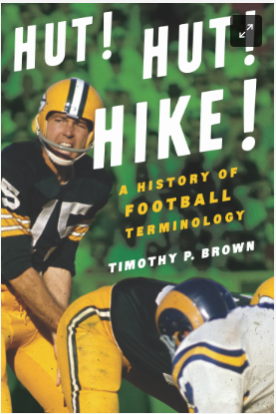Joe Cronin
This legend was a seven-time MLB All-Star and later a manager. He played for the Pittsburgh Pirates, Washington Senators and the Boston Red Sox; he was a player-manager for 13 seasons (1933–1945), and served as manager for two additional seasons (1946–1947).
Cronin also served as an executive, including a term as American League President from 1959-73.
The Baseball Career of Grover Alexander
Alexander's success stemmed from a potent combination of talent and grit. He possessed a deceptive curveball and a fastball that kept hitters guessing. More importantly, he displayed a fierce competitive spirit that pushed him to excel, even in the face of adversity. His work ethic was legendary, often pitching complete games on short rest. This relentless drive earned him the respect of his teammates and the fear of opponents.
Beyond wins, Alexander's accolades speak volumes. He won three pitching Triple Crowns, a feat signifying the league leader in wins, earned run average (ERA), and strikeouts. He led his team to the 1926 World Series championship with the St. Louis Cardinals, a crowning achievement in a career filled with individual and collective triumphs.
Despite a decline in later years, Alexander retired in 1930 with a remarkable .642 winning percentage, ranking among the highest in baseball history. His dedication to the game and fierce competitiveness cemented his place in the Baseball Hall of Fame in 1938.
Sam Crawford Early Baseball Star
Crawford's journey began in the minor leagues, where his potent bat quickly attracted attention. He debuted with the Cincinnati Reds in 1899 and showcased his prowess immediately. Though his first entire season (1900) didn't reasonably light the world on fire, 1901 saw him explode. Leading the league in home runs (16, a significant feat in the Deadball Era) and RBIs (104), Crawford announced himself as a force to be reckoned with.
However, a pivotal moment in his career unfolded in 1903 when he made a significant move to the fledgling American League's Detroit Tigers, teaming up with the legendary Ty Cobb. Despite the Tigers not reaching the pinnacle of success during Crawford's time, their offensive prowess was undeniable. Crawford and Cobb formed a formidable partnership, striking fear into the hearts of opposing pitchers for over a decade.
While Cobb often stole the spotlight with his aggressive base running and relentless batting approach, Crawford's consistency was remarkable. He never led the league in batting average, but he consistently finished near the top, never dipping below .292 from 1905 to 1915. This stretch also saw him lead the league in triples six times, a record that still stands today. His ability to hit for average and power, coupled with his base-stealing prowess, made him a nightmare for opposing teams.
Crawford's legacy extends beyond statistics. He was a fierce competitor known for his intense focus and determination. Despite playing in a low-scoring era, he amassed impressive power numbers, hitting 51 inside-the-park home runs – a testament to his blazing speed on the basepaths. He was also the first player to lead the National League (1901) and American League (1908) in home runs.
Sam Crawford retired in 1917 after a long and illustrious career. He finished with a .309 batting average, 2,961 hits, 97 home runs, and 309 triples – the most in baseball history. While overshadowed by flashier players of his time, Crawford's consistent excellence and mastery of hitting solidified his place among baseball's greats.
Born April 18, 1880, in Wahoo, Nebraska, was Baseball Hall of Fame Right Fielder Sam Crawford. Nicknamed "Wahoo Sam", for reference to his hometown, the left-handed Crawford, took advantage of the competing AL and NL for his services and joined the Detroit Tigers and played for Detroit, primarily in right field, from 1903 to 1917. One of the top batters of the era, Sam led the American League in home runs twice and in runs batted in three times. He still holds the MLB record for most career triples with 309. Though they were teammates Crawford and Ty Cobb had an immense rivalry for batting titles, it paved the way for Detroit to win three AL Pennants from 1907-09.
Mudcat Grant Iconic Baseball Pitcher
Born in 1935, Grant's journey began far from the bright lights of MLB stadiums. He honed his skills in Florida, eventually attending Florida A&M University. Denied the opportunity to showcase his talent in the major leagues due to segregation, he played for the Indianapolis Clowns, a prominent Negro Leagues team. Here, he earned the nickname "Mudcat" – a playful reference to his childhood nickname "Mud" and his deceptive curveball, a pitch that seemed to disappear like a fastball sinking into mud.
In 1958, with the dawn of the Civil Rights Movement and the integration of baseball, Grant finally broke into the majors with the Cleveland Indians. He quickly established himself as a force to be reckoned with. His smooth delivery, sharp fastball, and that signature curveball made him a nightmare for opposing batters.
Grant's finest season came in 1965 with the Minnesota Twins. He became a dominant ace, leading the league in wins (21) and complete games (10) while compiling an impressive 3.04 ERA. He was a key factor in propelling the Twins to the World Series, where he even contributed at the plate, becoming only the second American League pitcher to hit a home run in the Fall Classic.
Mudcat's career spanned 14 seasons, during which he played for seven different teams, including the iconic Oakland Athletics of the late 1960s. He later reinvented himself as a closer, recording 24 saves for the A's in 1970 – one of the few pitchers in history to achieve both 20 wins and 20 saves in a single season.
Born August 13, 1935, in Lacoochee, Florida, was MLB legendary Pitcher, Jim "Mudcat" Grant. He was an MLB All-Star 1963, 65 and played ball for the Cleveland Indians, Minnesota Twins, as well as some short stints with the Montreal Expos, Los Angeles Dodgers, St. Louis Cardinals, Oakland Athletics, and Pittsburgh Pirates.
Grant's talent went far beyond the baseball diamons as he also was a talented singer and writer with his book titled Black Aces.
Ned Hanlon
Vic Willis The Hall of Fame Pitcher Who Embodied Durability
-A Master of Efficiency:
Nicknamed for his Delaware roots, Willis entered the majors in 1898 and quickly established himself as a workhorse. He wasn't known for overpowering fastballs, but his pinpoint control and deceptive pitching repertoire allowed him to rack up innings and frustrate opposing hitters. Willis averaged over 22 wins a season during his peak years with the Pittsburgh Pirates, a testament to his remarkable consistency.
-The King of the Complete Game:
In an era dominated by starters, Willis reigned supreme. He holds the post-1900 record for most career complete games (388) – a statistic that speaks volumes about his endurance and ability to finish what he started. Furthermore, his 50 career shutouts showcase his ability to dominate and shut down opposing offenses.
-A World Series Appearance and Hall of Fame Recognition:
While Willis never won a World Series ring, he played a crucial role in helping the Pittsburgh Pirates reach the Fall Classic in 1909. Despite pitching effectively in relief, the Pirates ultimately fell short. Despite this, Willis' impressive career statistics – a 2.63 lifetime ERA and a 249-205 win-loss record – earned him a well-deserved induction into the National Baseball Hall of Fame in 1995.
-A Legacy of Durability:
Vic Willis' career embodied the virtues of a classic pitcher – control, efficiency, and the ability to go deep into games. He wasn't a flashy strikeout artist, but his consistency and longevity cemented his place among baseball's greats. His record-setting number of complete games serves as a lasting reminder of an era when pitchers were expected to shoulder a heavy workload, and Willis excelled in that role.
-Summary Life and career bio of Vic Willis
Born April 12, 1876, in Cecil County, Maryland, was Baseball Hall of fame Pitcher, Vic Willis. Willis, also known as the "Delaware Peach" played MLB for the Boston Beaneaters, Pittsburgh Pirates, and St. Louis Cardinals in 13 seasons in the National League from 1898 to 1910. He won one World Series championship as a member of the 1909 Pirates. Oddly enough Willis for as good of a pitcher as he was holds some dubious records including the post-1900 single season records for most losses (29 and most complete game losses (25).
Bill Dickey Baseball Hall of Fame Catcher
Herb Gardiner Hockey Legend
Addie Joss Stellar, Short-Lived Baseball Career
-Early Promise and Dominant Years:
Born in 1880, Joss debuted with the Cleveland Bronchos (later known as the Naps) in 1902. His exceptional control and deceptive fastball quickly made him a force on the mound. He established himself as a dominant pitcher, leading the American League in Earned Run Average (ERA) twice and recording an astonishing career ERA of 1.89, the second-lowest in MLB history (as of October 26, 2023).
-The Perfect Game and a Legacy of Excellence:
In 1908, Joss etched his name in baseball history by throwing a perfect game, a feat achieved only four times in baseball history at the time. He also threw a no-hitter in 1910, a testament to his unparalleled skill. Joss' ability to consistently throw strikes and limit walks baffled hitters, making him a nightmare for opposing teams. Throughout his career, he amassed 160 wins, 45 shutouts, and over 900 strikeouts, solidifying his reputation as an elite pitcher.
-A Tragic End and Enduring Legacy:
Sadly, Joss' promising career was cut short in 1911. He contracted tubercular meningitis and passed away at the young age of 31. Despite his short stint in the majors, his impact on the game was profound. Addie Joss is remembered for his exceptional pitching talent, his signature control, and the perfect game that cemented his place in baseball history.In 1978, recognition for his incredible career came in the form of his induction into the Baseball Hall of Fame.
-Summmary of Joss' Career
Baseball Hall of Fame player who pitched for the Cleveland Bronchos of Major League Baseball, later known as the Naps, between 1902 and 1910. He is famous for having a 1.89 career ERA which is the second-lowest in MLB history, behind Ed Walsh, while his career WHIP of 0.968 is the lowest of all-time.



.jpg?https://jerseydispatch.com/pfeL/p/c312642c0431e75b485e432232c99c1c/website/Daily-Sports-Uniform-Number-History/February/February-8-Jersey-Numbers/Images/.Basketball_at_Pas-en-Artois,_France,_1918_(20166469838).jpg)
.jpg?https://jerseydispatch.com/pfeL/p/c312642c0431e75b485e432232c99c1c/website/Sports-History-Photo-of-the-Day/February-Images/February-8-Image/images/.640px-Arctic_Sisterhood_Basketball_banner,_Nome_(NOWELL_200).jpg)





